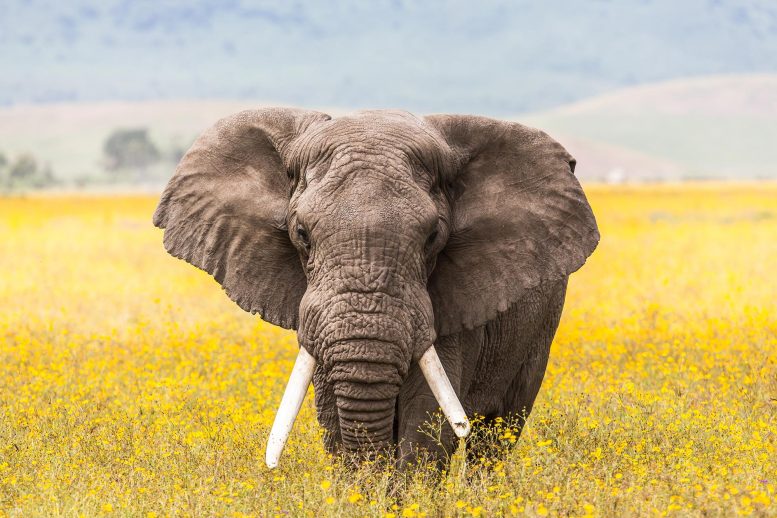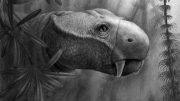
A recent study provides new insights into the evolution of dexterous trunks in ancestral elephants. It highlights the co-evolution of elongated mandibles and trunks in response to environmental changes, leading to the unique feeding capabilities of modern elephants.
A research analysis on the development of long-nosed gomphotheres, predecessors of today’s elephants, indicates that transitioning to open-area grazing contributed to the evolution of their winding and dexterous trunks.
In a study published in the journal eLife, scientists have provided new insights into how ancestral elephants developed their dextrous trunks.
The research integrates various analyses to explore the dietary habits of extinct longirostrine elephantiforms—mammals resembling elephants, notable for their extended lower jaws and tusks. According to the editors, this study is crucial for comprehending the development of the lengthy lower jaw and trunks in these creatures during the Miocene epoch, approximately 11–20 million years ago. The study presents convincing arguments for the variety of these features in longirostrine gomphotheres and their probable evolutionary adaptations to worldwide climate shifts.
The findings may also shed light on why modern-day elephants are the only animals able to feed themselves using their trunks.
Longirostrine Gomphotheres and Their Evolution
Longirostrine gomphotheres are part of the proboscidean family – a group of mammals including elephants and known for their elongated and versatile trunks. Longirostrine gomphotheres are notable as they underwent a prolonged evolutionary phase characterized by an exceptionally elongated lower jaw, or mandible, which is not found in later proboscideans. It is thought that their elongated mandible and trunk may have co-evolved in this group, but this change among early to late proboscideans remains incompletely understood.
“During the Early to Middle Miocene, gomphotheres flourished across Northern China,” says lead author Dr. Chunxiao Li, a postdoctoral researcher at the University of Chinese Academy of Sciences, Beijing, China. “Across species, there was huge diversity in the structure of the long mandible. We sought to explain why proboscideans evolved the long mandible and why it subsequently regressed. We also wanted to explore the role of the trunk in these animals’ feeding behaviors and the environmental background for the co-evolution of their mandibles and trunks.”
Methodology and Findings
Li and colleagues used comparative functional and eco-morphological investigations, as well as a feeding preference analysis, to reconstruct the feeding behavior of three major families of longirostrine gomphotheres: Amebelodontidae, Choerolophodontidae, and Gomphotheriidae.
To construct the feeding behaviors and determine the relation between the mandible and trunk, the team examined the crania and lower jaws of the three groups, sourced from three different museums. The structure of the mandible and tusks differed across the three groups, indicating differences in feeding behaviors. The mandibles of Amebelodontidae were generally shovel-like and the tusks were flat and wide. Gomphotheriidae had clubbed lower tusks and a more narrow mandible, while Choerolophodontidae completely lacked mandibular tusks and their lower jaw was long and trough-like.
Next, the team conducted an analysis of the animals’ enamel isotopes to determine the distribution and ecological niches of the three families. The results indicated that Choerolphontidae lived in a relatively closed environment, whereas Platybelodon, a member of the Amebelodontidae family, lived in a more open habitat, such as grasslands. Gomphotheriidae appeared to fill a niche somewhere in between these closed and open habitats.
A Finite Element analysis helped the team determine the advantages and disadvantages of the mandible and tusk structure between each group. Their data indicated that the Choerolophodontidae mandible was specialized for cutting horizontally or slanted-growing plants, which may explain the absence of mandibular tusks. The Gomphotheriidae mandible was found to be equally suited for cutting plants growing in all directions. Platybelodon had structures specialized for cutting vertically growing plants, such as soft-stemmed herbs, which would have been more common in open environments.
Trunk Evolution and Environmental Adaptations
The three families also showed differences in their stages of trunk evolution, which could be inferred from the narial structure – the region surrounding the nostrils. The narial region in Choerolophodontidae suggested that they had a relatively primitive, clumsy trunk. In Gomphotheriidae, the narial region was most similar to modern-day elephants, suggesting they had a relatively flexible trunk. The trunks of Platybelodons may be the first example of a proboscidean trunk with the ability to coil and grasp. The evolutionary level of the trunk appeared to relate to the ability of the mandible to cut horizontally, strongly suggesting a co-evolution between the trunk and the mandible in longirostrine gomphotheres.
During the Mid-Miocene Climate Transition, which caused regional drying and the expansion of more open ecosystems, Choerolophodontidae experienced a sudden regional extinction and Gomphotheriidae numbers also declined in Northern China. The study suggests that the development of the coiling and grasping trunk in Platybelodon allowed this group to survive in greater numbers in their open environments. This may also explain why other animals with trunks, such as tapirs, never developed such dextrous trunks as elephants, as they never moved into open lands.
Cross-Disciplinary Approach and Limitations
“Our cross-disciplinary team is dedicated to introducing multiple quantitative research methods to explore paleontology,” says co-author Ji Zhang, associate professor of structural engineering at Huazhong University of Science and Technology, Wuhan, China. “Modern computational mechanics and statistics have injected new vitality into traditional fossil research.”
The main limitation of this work is the lack of discussion comparing the team’s results with the development of gigantism and long limbs in proboscideans from the same period, according to eLife’s editors. The authors add that such analysis could add to our understanding of how changing feeding behaviors related to wider differences in the animals’ body shapes and sizes during this time.
“Our findings demonstrate that multiple eco-adaptations have contributed to the diverse mandibular structure found in proboscideans,” concludes senior author Dr. Shi-Qi Wang, professor at the Key Laboratory of Vertebrate Evolution and Human Origins of the Chinese Academy of Sciences. “Initially, the elongated mandible served as the primary feeding organ in proboscideans, and was a prerequisite for the development of the extremely long trunk. Open-land grazing drove the development of trunk coiling and grasping functions, and the trunk then became the primary tool for feeding, leading to the gradual loss of the long mandible. In particular, Platybelodons may have been the first proboscidean to evolve this grazing behavior.”
Reference: “Longer mandible or nose? Co-evolution of feeding organs in early elephantiforms” by Chunxiao Li, Tao Deng, Yang Wang, Fajun Sun, Burt Wolff, Qigao Jiangzuo, Jiao Ma, Luda Xing, Jiao Fu, Ji Zhang and Shi-Qi Wang, 28 November 2023, eLife.
DOI: 10.7554/eLife.90908.1









Be the first to comment on "Ancient Giants Unearthed: The Evolutionary Secrets of Elephant Trunks"